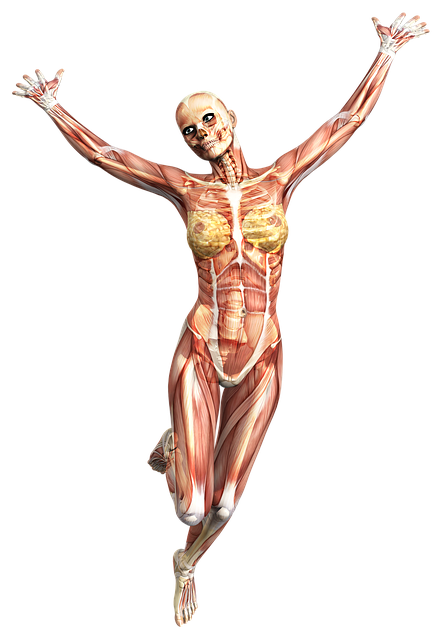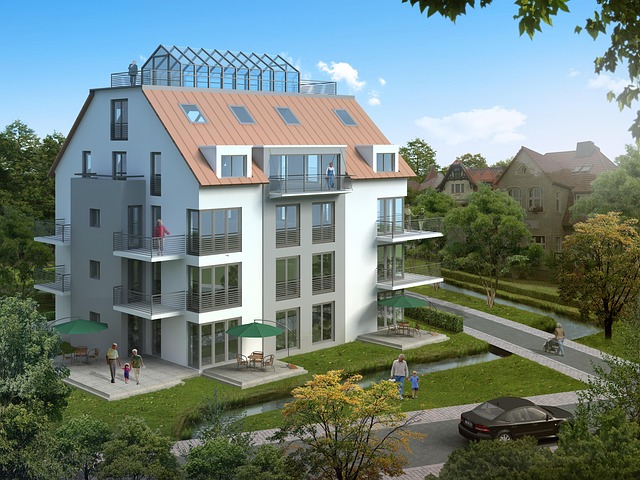Strategic Conduit & Cable Tray Modeling for Optimal Lighting Design

Conduit and cable tray modeling is a crucial tool for lighting design, enabling precise simulation o…….
In an era defined by rapid technological advancements, electrical 3D modeling has emerged as a transformative force, revolutionizing the way we design, develop, and visualize complex electrical systems. This cutting-edge technique allows professionals to create detailed digital representations of electrical components, circuits, and entire infrastructures in three dimensions. By offering an immersive and precise view of these intricate networks, it enables more efficient planning, optimization, and maintenance.
This article aims to provide a comprehensive insight into the world of electrical 3D modeling, exploring its various facets, applications, and the impact it has on industries worldwide. We will delve into its historical evolution, current trends, economic implications, technological innovations, regulatory landscape, and future prospects, offering readers a holistic understanding of this dynamic field.
Electrical 3D modeling is a specialized form of computer-aided design (CAD) that focuses on creating virtual prototypes and representations of electrical systems. It involves utilizing advanced software tools to build digital models, which can then be manipulated, analyzed, and simulated in a 3D environment. This process includes designing circuits, wiring diagrams, power distribution networks, and even complex electronic devices, all with unparalleled accuracy and detail.
The core components of electrical 3D modeling include:
CAD Software: Specialized software applications like AutoCAD Electrical, SolidWorks Electrical, or Synaps Design are used to create 3D models. These tools offer a wide range of features for drawing circuits, placing components, and simulating electrical behavior.
3D Modeling Techniques: This involves translating real-world electrical systems into digital 3D objects. It includes creating geometric representations of conductors, insulators, connectors, and other components, ensuring accurate dimensions and specifications.
Electrical Simulation: Once the model is built, simulation tools can analyze the electrical behavior of the system. This includes checking for power flows, current distributions, voltage drops, and identifying potential issues or inefficiencies.
Historically, 2D drafting was the primary method for designing electrical systems, but it had limitations in terms of visualization and complexity handling. Electrical 3D modeling emerged as a game-changer, providing a more intuitive and comprehensive approach to design and analysis. With the advancement of computing power and software capabilities, this technology has evolved rapidly, finding applications across various sectors.
The impact of electrical 3D modeling is felt across industries and regions worldwide, driving digital transformation and enhancing productivity. Here’s a glimpse into its global reach:
North America: The United States and Canada have been early adopters of this technology, with robust manufacturing and automotive sectors leading the way. Companies like Tesla and General Motors utilize advanced electrical 3D modeling for vehicle electronics design and power distribution systems.
Europe: European countries are known for their advanced engineering and research capabilities. Germany, in particular, has a strong focus on industrial automation, where electrical 3D modeling is used extensively for designing complex control systems and robotics.
Asia Pacific: The rapid industrialization and technological advancements in countries like China and Japan have driven the adoption of electrical 3D modeling. These nations are at the forefront of electronics manufacturing and power infrastructure development, leveraging this technology to streamline processes.
Emerging Markets: Countries in South America, Africa, and the Middle East are also embracing electrical 3D modeling, often as a means to modernize their industrial sectors and keep up with global standards. This technology is playing a crucial role in the digital transformation of emerging economies.
Key trends shaping the future of electrical 3D modeling include:
Cloud Computing Integration: Cloud-based platforms are enabling collaboration and remote access to complex models, allowing teams worldwide to work together on projects.
AI and Machine Learning: Artificial intelligence is enhancing simulation capabilities, predicting component failures, and optimizing design processes.
Internet of Things (IoT) Integration: As IoT devices become more prevalent, electrical 3D modeling is adapting to include these interconnected components, enabling designers to create smart, integrated systems.
The economic implications of electrical 3D modeling are significant, influencing various sectors and the global economy. Here’s an analysis of its economic impact:
| Sector | Economic Influence |
|---|---|
| Manufacturing | Electrical 3D modeling has reduced design cycles, enabling faster product development and time-to-market. This leads to increased productivity, reduced costs, and improved competitiveness in the global market. |
| Electronics | The industry benefits from precise component placement, optimized circuit designs, and efficient power distribution, resulting in more compact, powerful, and energy-efficient devices. |
| Infrastructure | In the power sector, 3D modeling aids in smart grid development, network planning, and asset management, leading to improved efficiency and reduced downtime. |
| Research & Development (R&D) | It provides researchers with powerful tools for prototyping, testing, and iterating designs quickly, accelerating innovation and discovery. |
The global electrical 3D modeling market is projected to grow at a CAGR of approximately 12% from 2022 to 2029, indicating strong demand and investment in this technology. This growth is driven by factors like increasing automation, the rise of smart cities and buildings, and the growing need for efficient energy management.
Continuous technological advancements are pushing the capabilities of electrical 3D modeling to new heights. Here’s a look at some key innovations:
Advanced Simulation Software: Powerful simulation tools now incorporate machine learning algorithms, enabling more accurate predictions and insights into complex systems’ behavior.
Virtual Reality (VR) and Augmented Reality (AR): VR and AR technologies offer immersive experiences for visualizing and interacting with 3D models, making design reviews and collaboration more engaging and effective.
Hardware Interoperability: The ability to connect various hardware components directly into the digital model allows for real-time testing and validation, ensuring design integrity.
Standardization and Interoperability: Efforts are being made to establish industry standards for data exchange and compatibility between different software platforms, fostering collaboration and ensuring model accuracy across tools.
As with any advanced technology, electrical 3D modeling is subject to regulatory frameworks that ensure safety, security, and ethical practices. Here’s an overview of key considerations:
Safety Standards: Industries like automotive and aerospace have specific standards for electrical system design and testing, ensuring product safety and reliability.
Data Privacy: With the increasing use of IoT devices and connected systems, data privacy and security become critical. Regulations like GDPR in Europe set guidelines for handling personal and sensitive data.
Intellectual Property Protection: As complex designs are digital, intellectual property rights and licensing agreements take on new importance, requiring advanced strategies to protect digital assets.
International Cooperation: Given the global nature of electrical 3D modeling, international cooperation is essential to harmonize standards and regulations, ensuring a level playing field for businesses worldwide.
The future of electrical 3D modeling looks promising, with ongoing innovations set to shape its evolution. Here’s a glimpse into what lies ahead:
Smart Cities and Buildings: Electrical 3D modeling will play a pivotal role in designing and managing the complex interconnected systems within smart cities and buildings, ensuring energy efficiency and sustainability.
Renewable Energy Integration: As the world shifts towards renewable energy sources, this technology will aid in optimizing solar and wind power systems, transmission networks, and storage solutions.
Autonomous Vehicles and Robotics: Advanced electrical 3D modeling will continue to drive the development of autonomous vehicles and robotics, enabling more sophisticated control systems and power management.
Quantum Computing Integration: While still in its early stages, the potential for integrating quantum computing with electrical 3D modeling could revolutionize simulation capabilities, handling complex problems that are currently intractable.
Electrical 3D modeling has emerged as a powerful tool, revolutionizing how we approach electrical design and development. Its global impact is evident across diverse sectors, driving efficiency, innovation, and productivity. As technology continues to evolve, this field will play an increasingly crucial role in shaping our future, from smart cities to renewable energy solutions and advanced robotics.
With its ability to provide precise, immersive, and collaborative 3D representations of electrical systems, electrical 3D modeling is not just a tool but a catalyst for transformation, enabling professionals worldwide to unlock new possibilities and create a more connected, efficient, and sustainable future.

Conduit and cable tray modeling is a crucial tool for lighting design, enabling precise simulation o…….

Smart building electrical modeling leverages BIM software to create digital twins of electrical infr…….

Digital Twin technology transforms electrical infrastructure management by creating virtual models o…….

MEP 3D modeling revolutionizes smart building design and operation by integrating low-voltage system…….

3D electrical wiring design is a revolutionary approach for smart buildings, offering precise planni…….

Electrical BIM services revolutionize sustainable design by offering digital tools for energy-effici…….

3D electrical wiring design revolutionizes power infrastructure planning by enabling precise modelin…….

Electrical 3D modeling services streamline design and engineering processes for complex systems, off…….

3D electrical wiring design is a cutting-edge approach that optimizes energy efficiency by minimizin…….

Electrical 3D modeling is a transformative tool for designing smart buildings, enabling precise digi…….